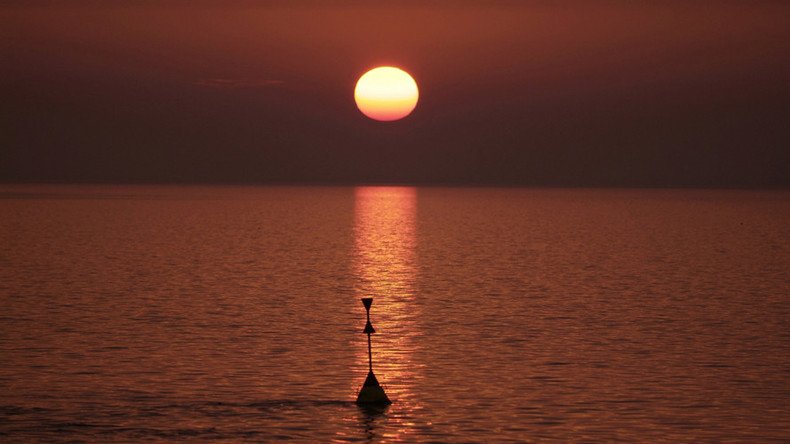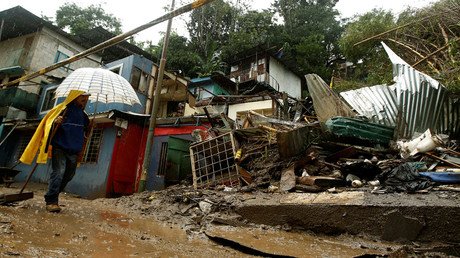Red alert? Mysterious Soviet buoy washes onto Florida beach after Hurricane Irma

Hurricane Irma left behind a trail of devastation in Florida, but it also delivered something mysterious to its shores – a massive Soviet buoy. Some have suggested the Cold War-era relic came from Cuba.
The buoy washed onto shore at Dr. Von D. Mizell-Eula Johnson State Park in Dania Beach in the days following Irma, the Orlando Sentinel reported on Thursday.
Adorned in brownish-orange stripes, the buoy bears the writing saying “Hydrometeorological Service of the USSR” in Russian. It refers to a branch of meteorology involving the study of water in the atmosphere.
Mysterious Soviet buoy surfaces in South Florida https://t.co/uVZEz7N9gzpic.twitter.com/nhiPzBVhOf
— Orlando Sentinel (@orlandosentinel) October 5, 2017
National Weather Service meteorologist Robert Molleda said that such buoys are often used to measure wave height, as well as weather variables like temperature, humidity, wind speed, wind direction, and atmospheric pressure. Others only report water temperature or water levels to monitor for tsunamis.
The buoy also bears the inscription saying it has a lifting capacity of 3,000kg (6,600lb).
Although it remains unclear from where the buoy traveled, workers at the state park believe it floated 350 miles (563km) from Cuba, which had close ties with the Soviet Union.
That theory has been supported by the US Navy, with a spokeswoman for a division of Naval Sea Systems Command (NAVSEA) in Washington, DC, confirming that two of her engineers visited the state park to check it out, because they also thought it may have floated ashore from Cuba.
“Our guys were just curious,” Roxie Merritt said. “They have a theory that it may have been attached to Cuba; it’s purely speculation.”
Molleda also said it was likely the buoy came from Cuba, citing weather patterns observed during Irma.
“In Irma, the storm came from the south-southeast. And in a storm like that, something could get dislodged,” he said. “It could go adrift and easily wind up in Florida.”
Meanwhile, Harold M. Leich, the Russian Area Specialist of the European Division of the Library of Congress, says his “best guess” is that the buoy wasn't used for weather measuring at all.
“My best guess is the buoy, and probably many others just like it or similar to it, were placed by the Soviets as an aid to navigation for Soviet vessels bringing materials to Cuba or returning back to the USSR,” he said. “In the chaos of the collapse of the USSR in 1991, the infrastructure placed by the Soviets simply remained in Cuba, including this buoy.”
Park employees noticed the buoy at the same time at Coast Guard officials, as the military branch has an administrative office next to the park's headquarters.
Bill Moore, the park’s maintenance mechanic, said the Coast Guard initially “tried to confiscate” the buoy.
However, Moore managed to retrieve it first, tying a rope around it with a skid-steer loader and dragging it up an embankment to the state park office's parking lot.
Park officials have since said they are willing to hand over the buoy to the Coast Guard, if it wants it.
“The thing is still here,” park manager Steven Dale told the Orlando Sentinel.














